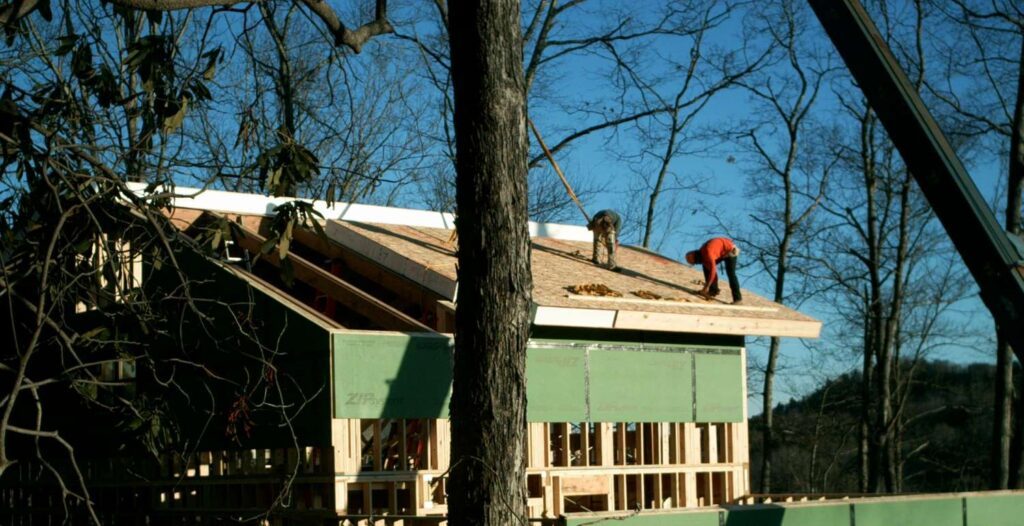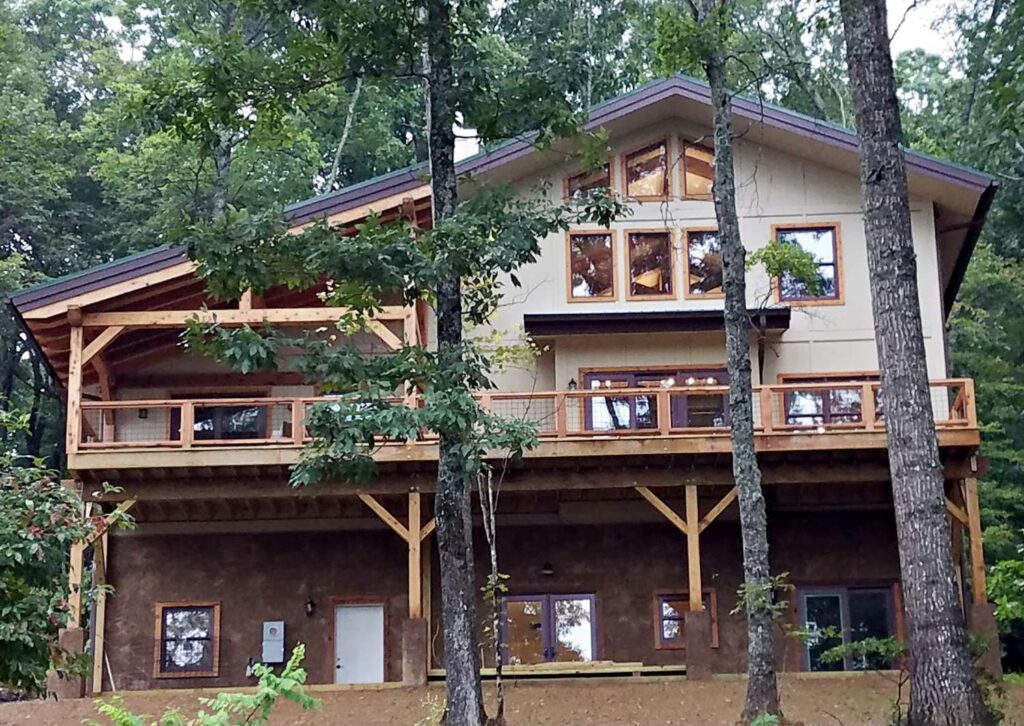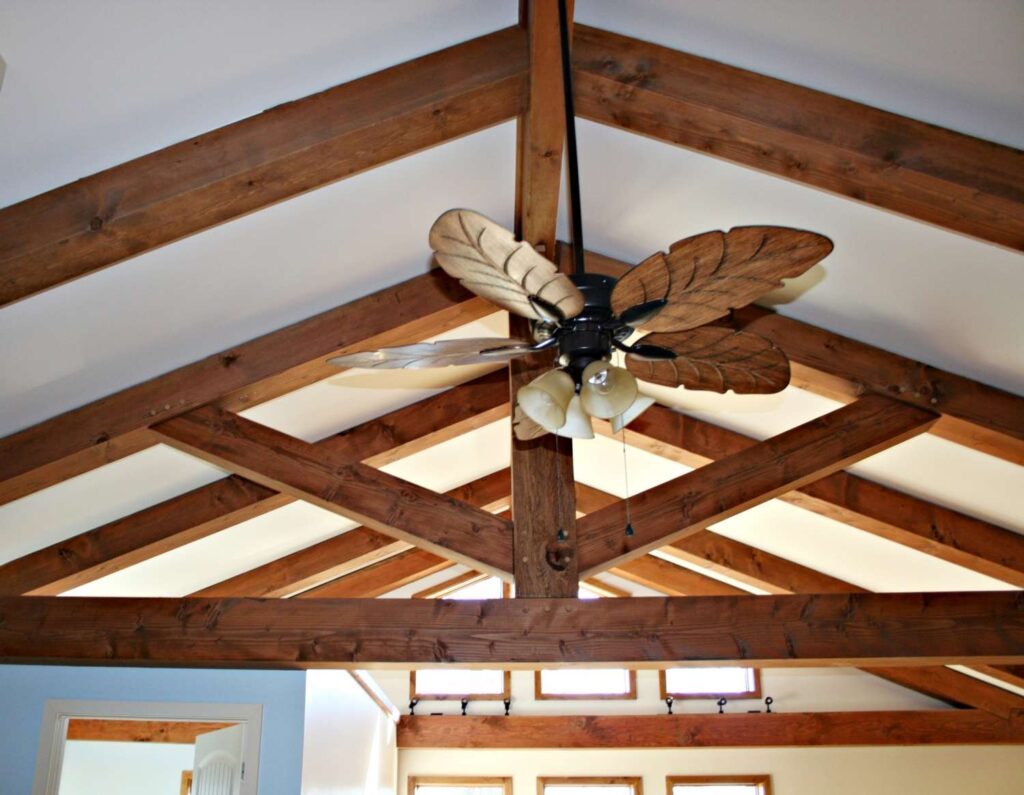Clients came to us a few years ago in search of someone who could both design and build a home that would be environmentally friendly, energy efficient and structurally durable.
They had a budget and general ideas about the interior design. However, they needed a builder with the knowledge of and a commitment to using modern methods and materials to design-build their high-performance home.
We focused first on the design and construction of the building envelope – walls, roof and foundation – then addressed the interior efficiency and comfort aspects. The envelope-first focus dramatically reduces the energy required to heat and cool a high performance home and also ensures the structural integrity is not compromised.
As longtime supporters of Green Built Alliance and its mission, we reached out to fellow members of the nonprofit whenever possible for input and advice on HVAC systems and specifications, roofing, plumbing, electrical fixtures and appliances, water run-off and site preparation.
Using this as the guiding principle, the completed home in Boone has received both ENERGY STAR® 3 and Green Built Homes certification.
The building envelope of the home combines cutting-edge materials such as insulated concrete forms (ICFs), shop-built panelized walls and structural insulated panels (SIPs).

The basement and basement walls are designed and constructed with ICFs, which integrate the strength of concrete and the energy efficiency of expanded polystyrene foam. This method of construction provides both insulation and a vapor barrier while encasing the 10-inch thick concrete poured wall. The result is a superior, energy-efficient wall that will provide long-term energy cost savings while also adding resale value.
Of the many energy-efficient features of the home, the walls were the largest contributing factor to achieving the double certification. Designed and manufactured to exceed local building codes, the walls were prefabricated off-site in our manufacturing facility.
A software program mapped out exact measurements and provided significant raw-material waste savings, down to 2 percent on framing materials rather than the industry standard 20 percent for site-built construction. Every piece of wood used in the home was drawn to exact size, cut in the shop, then given a part number to be used during the wall-panel manufacturing.

Using staff carpenters, most of whom hold HERS and BPI Building Envelope and Envelope Professional certifications, the walls are framed with kiln dried, 2×6 lumber and sheathed. The wall sheathing combines the strength and stability of a structural sheathing system with the enhanced durability of the product’s water-resistive barrier. A rain screen was used outside of the sheathing, allowing any moisture that may find its way past the siding to have an airspace to dry.
Being constructed in our shop meant the walls were never rained on or exposed to the elements. Electrical chases were drilled and the windows and doors were pre-installed, flashed, and taped prior to delivery and installation on site.
Installing as many of the windows and doors prior to delivering the walls on site saves a tremendous amount of time, particularly on sloped building sites where working from scaffolding adds time and cost to a project. The first-floor and second-floor exterior walls were completely installed on the existing subfloor in a matter of hours, not weeks.
The roof system was constructed with 12.25-inch thick, R-48 SIPs over heavy timber trusses and rafters. Using SIP roof panels allowed for the home to be completely “dried in” within a day, while also offering a much more airtight structure. This resulted in reduced energy costs to heat and cool and a quieter and more comfortable space.

Over the top of the SIP roof panels, we built a “cold roof” system, essentially 1×4 sleepers with a layer of five-eighths inch plywood sheathing and underlayment. Similar in concept to a rain screen on the exterior walls, it provides for a three-quarters inch air space between the top of the SIP roof panel and the roof sheathing which carries the finish roofing material. The air space created by the “cold roof” allows for any condensation that may develop under the primary roofing material – a not uncommon condition under a metal roof – to dry before it may cause any problems.
The douglas fir heavy timber roof system offered greater flexibility in the floor-plan layout than traditional trusses without compromising the structural integrity. They also provide a feel to the home that only natural heavy timber can convey and addressed the client’s desire for a clear line of site from one area in the home to another.
The longer spans that are possible, without the need for intermediate supports, allow for the creation of a great room which incorporates a vaulted ceiling, large energy-efficient windows, sliding doors and a floor-to-ceiling rock fireplace. The combination of the heavy timber on the inside and the proper placement of windows to capture the forest outside helps to connect the conditioned space with its surroundings.
Energy-efficient windows and doors and ultra-high-efficiency variable speed heat pump systems with Greenspeed Intelligence and a SEER rating of 19, HSPF of 10.5, and an EER rating of 14.5 help keep the lower and main level comfortable.
A mini-split system provides the loft with conditioned air. The mini-split system creates a comfortable environment no matter what the conditions are outside, with advanced monitoring controls and the personal comfort control offering the control of temperature, fan speed, and air direction.
Ultra-high-efficient water heating equipment contributes to a reduction in energy consumption, lessens air pollution both indoors and outdoors, and reduces greenhouse emissions. An energy recovery ventilator, expels stale polluted air outdoors and refreshes the home with clean outside air, while at the same time recovering energy and pre-tempering the air coming into the home.
This particular home utilizes no renewables for a number of reasons. Even without the use of renewables, there is so much that can be done to improve the efficiency of a home. Simply put, it comes down to being precise and taking the time to do the job the right way.
We know that the building science and best practices are constantly being updated so it’s important to stay current and evolve. In addition to the materials and construction methods used, the ability to make all systems work together as a cohesive unit is equally important. A structure meant to house people is a holistic system. There are multiple systems within that structure that have to work together, and we are learning to integrate these systems more efficiently.
The methods and materials used in our high-performance homes are not a low-cost alternative to site-built construction, but a long overdue step forward in general building best practices. The end result is to reduce environmental impact and ensure the client gets the most value for their money. It’s also a reflection of who we are as a company, founded and directed by working carpenters, to do the best job possible on every project.
Tom Owens has been a woodworker since 1984, both as a furniture designer/maker and as a timber frame designer and carpenter. Living in the Blue Ridge Mountains of North Carolina since 1994, Tom co-founded High Country Timberframe & Gallery Woodworking Co. in Boone with business partner Peter Jankowski in 1997. In 2010, under Tom’s leadership, High Country Timberframe added a Design/Build Division that focuses on the design/construction of high performance homes.
You can also view this article as it was originally published on pages 20-21 of the 2018-2019 edition of the directory.

